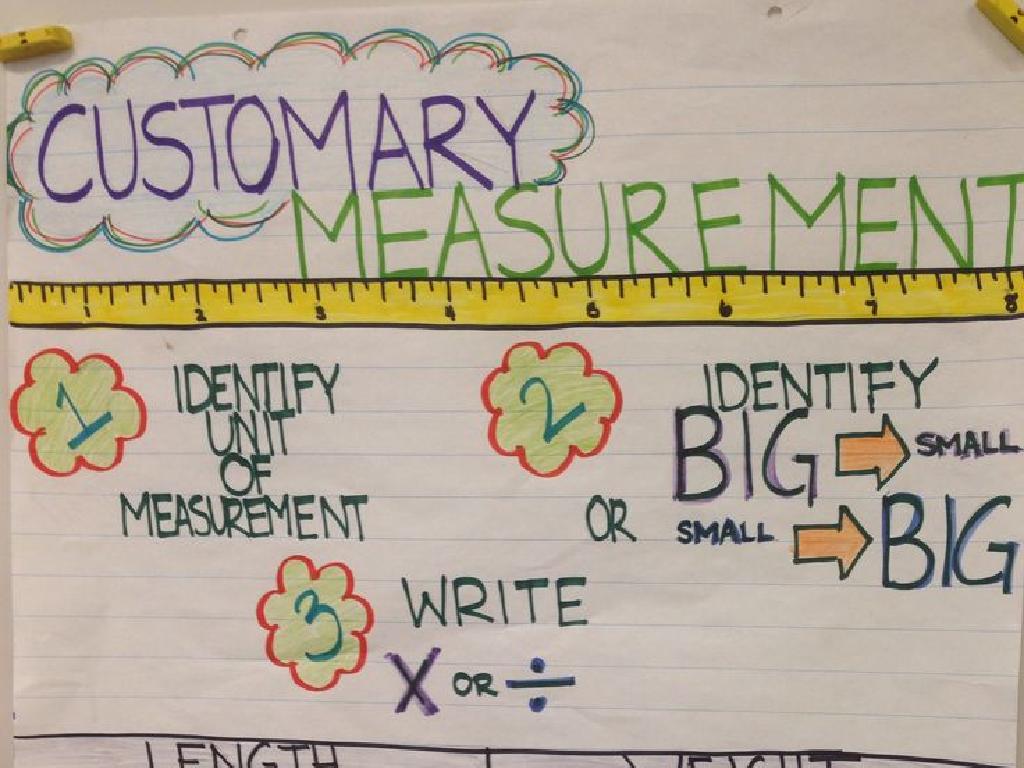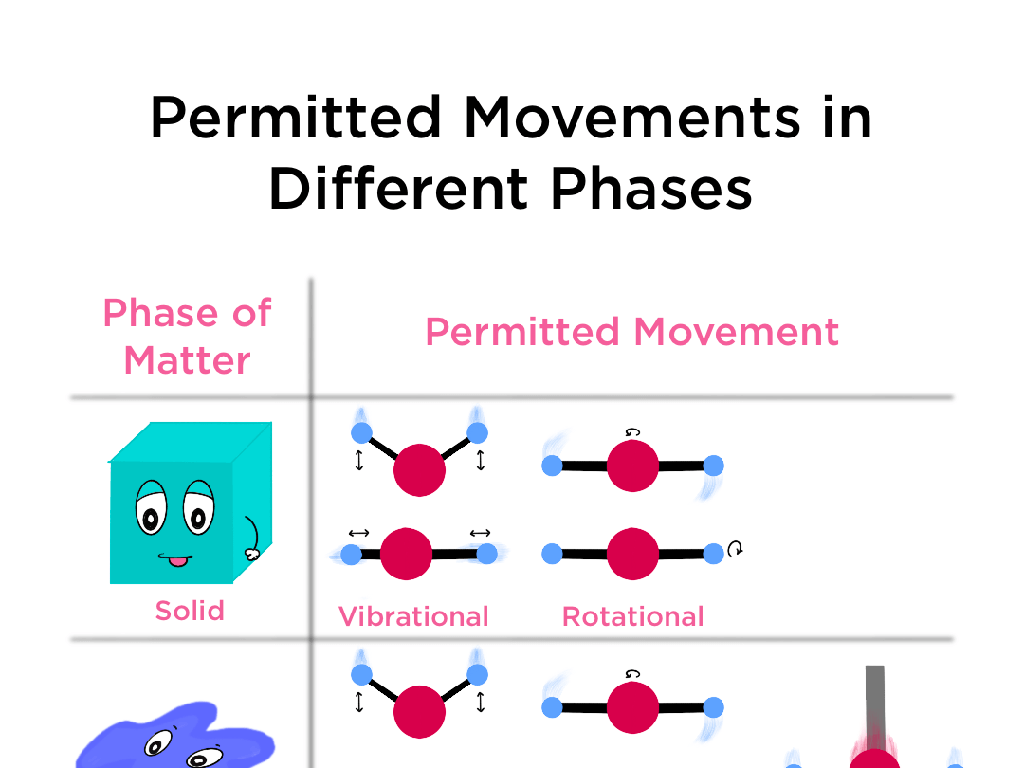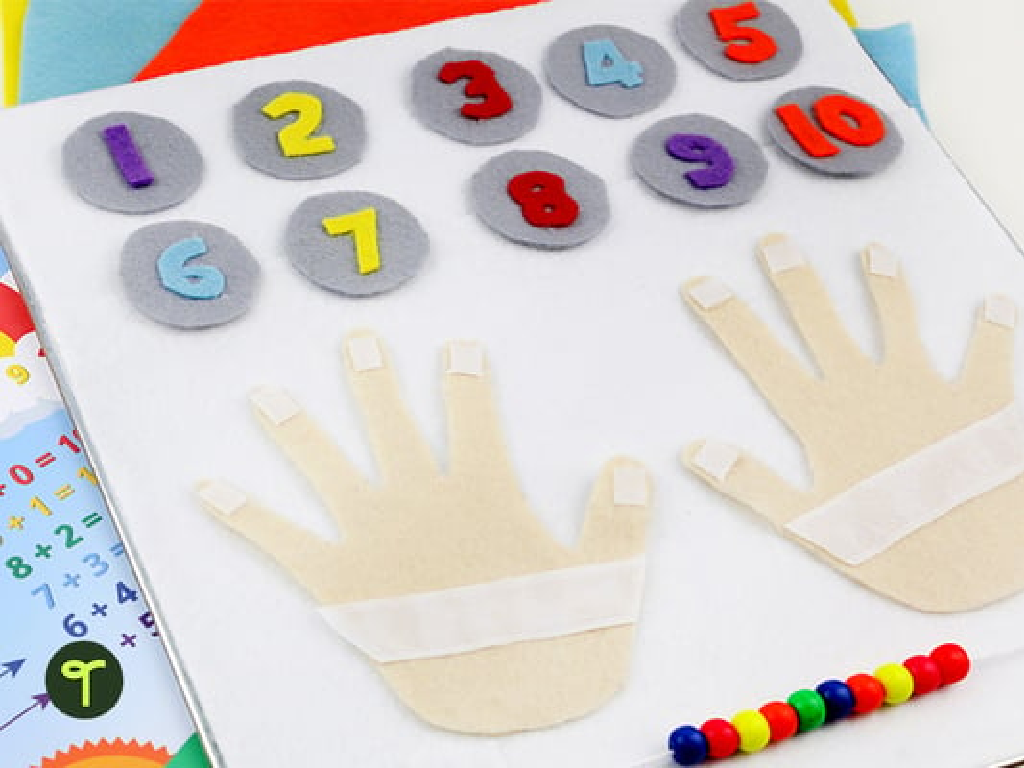Long And Short
Subject: Science
Grade: First grade
Topic: Comparing
Please LOG IN to download the presentation. Access is available to registered users only.
View More Content
Comparing Sizes: Long and Short
– Learn about long and short
– Long things are like pencils, short things are like erasers
– Comparing things around us
– Look at objects in the classroom to see if they are long or short
– Why comparing is important
– Helps us describe and understand sizes
– Activities to practice comparing
|
This slide introduces the concept of comparing sizes, focusing on ‘long’ and ‘short’ as descriptive terms. Start by explaining that some things are longer than others, and some are shorter, using familiar classroom objects as examples. Emphasize the importance of comparing as a basic skill to describe and make sense of the world. Engage the students with activities where they can practice comparing objects, such as lining up pencils and erasers to see which is longer or shorter. Encourage them to use their hands or paper strips to measure and compare lengths of different items. This will help them visualize and better grasp the concept of long and short.
Understanding Long and Short
– What does ‘long’ mean?
– Long is when something has a great length.
– Long stretches far end to end
– Like a train stretching out on the tracks.
– Examples of long objects
– A giraffe’s neck or a long jump rope.
– Think of something long
– Maybe a long hallway or a limousine?
|
This slide introduces the concept of ‘long’ to first graders by defining it and providing relatable examples. Emphasize that ‘long’ refers to the measurement from one end of an object to the other. Use visuals like a picture of a train or a giraffe to illustrate the point. Encourage the students to actively participate by thinking of and sharing their own examples of long objects they’ve encountered in their daily lives. This will help them understand the concept in a practical context and remember it better. You can extend the activity by having them compare two objects in the classroom to identify which is longer.
Understanding Length: What Does Short Mean?
– Short means not very long
– It doesn’t stretch far
– Examples of short objects
– Pencils, mice, and books are short compared to a car or a tree
– Think of something short
– Can you find something short in the classroom?
|
This slide introduces the concept of ‘short’ as a way to describe the length of an object. It’s important to convey that ‘short’ is a relative term and can be used to compare the length of different items. Encourage the students to look around their environment for objects that are short, such as a pencil or a small toy, and compare them to longer items like a ruler or a broom. This will help them understand the concept of length in a tangible way. During the next class, have a discussion where students can share the short items they found and explain why they think those items are short.
Comparing Long and Short
– Comparing shows differences
– Example: Snake vs. Worm
– A snake is usually longer than a worm
– Let’s compare other objects
– We can use rulers to see which is longer or shorter
– Understanding long and short
– Knowing this helps us describe things better
|
This slide introduces the concept of comparison to first graders, focusing on the attributes of ‘long’ and ‘short.’ Start by explaining that comparing is how we find out what makes two things different. Use tangible examples like a snake and a worm to illustrate the concept of length. Encourage the students to think of other objects they can compare. Introduce tools like rulers for practical comparison and emphasize the importance of descriptive language in science. Plan an activity where students can practice comparing lengths of various classroom objects.
Let’s Practice Together: Long and Short
– Observe various objects
– Decide if they are long or short
– Use comparative words
– Words like ‘longer’, ‘shorter’, ‘longest’, ‘shortest’
– Discuss our observations
– Share why we think an object is long or short
|
This slide is for a class activity where students will engage in a hands-on learning experience to understand the concept of length. Provide a variety of objects for the students to compare. Encourage them to use comparative words such as ‘longer’ and ‘shorter’ to describe their observations. For example, compare pencils of different lengths and use the terms to describe their relative sizes. This activity will help students grasp the concept of comparing lengths in a tangible way. Prepare to facilitate a discussion where each student can share their findings and reasoning with the class, reinforcing their understanding of the concepts of long and short.
Class Activity: Long and Short Hunt
– Let’s go on a hunt in our classroom
– Use rulers to measure items
– How to use a ruler and what ‘long’ and ‘short’ mean
– Find one long and one short item
– Share your items with the class
– Tell us why you chose each item
|
This activity is designed to help students understand the concept of length by comparing objects. Provide rulers and demonstrate how to use them. Explain that ‘long’ refers to greater length and ‘short’ to smaller length. Encourage students to explore and measure various objects in the classroom. Once they have selected their items, ask them to explain their choices, fostering communication skills and reinforcing the concept of comparing lengths. Possible variations of the activity could include grouping items by length, ordering multiple items from shortest to longest, or even measuring and comparing their own heights.





